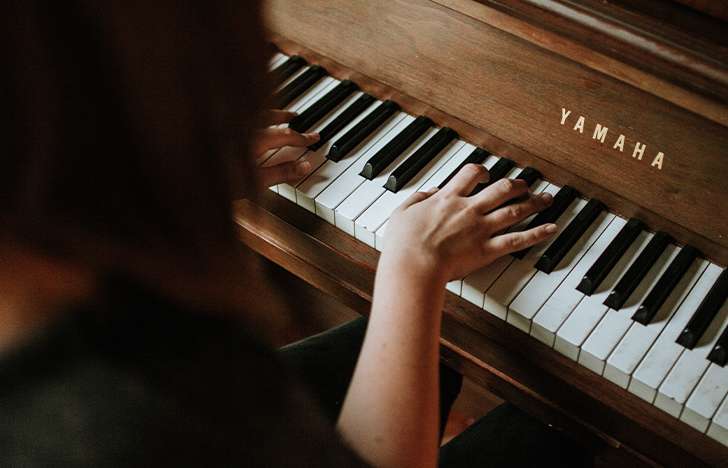I feel very fortunate to be a member of the talented and diverse team at The Center for the Healing Arts and Sciences. I am a Jungian Analyst in Training at the International School of Analytical Psychology (ISAP Zurich), though becoming a Jungian analyst is something I could not have imagined 20 years ago. I began piano lessons when I was 8 and started playing professionally when I was 15 by accompanying opera rehearsals and voice lessons in the music department at Texas Tech University in Lubbock, Texas. I went on to earn my bachelor’s and master’s degrees from the Mannes College of Music in New York in solo piano performance. But alongside my dedication to music, I became interested in Carl Jung when I read his autobiography Memories, Dreams, Reflections as a college student. After graduating I moved to Houston and took a position as a staff pianist at the Shepherd School at Rice. I was happy to discover the Jung Center of Houston and began taking classes in the late 1990s. Over the years I continued reading and studying Jung, and about 10 years ago began presenting seminars, lectures and concerts at the Jung Center in order to bring together my psychological and musical interests. I began my psychoanalytic training at ISAP Zurich in 2015. Often people ask me about this career change, but I don’t see it as a change at all, rather a shift that still includes music in many ways. I continue to perform as a core member of the St. Cecilia Chamber Music Society in Houston, and I am currently writing and recording original music in the band Spirit & the Trickster, with my Jungian colleague and co-founder of The Center, John Price. But primarily I consider it a “shift” instead of a “change” because the most important skills I developed as musician translate directly into my work with clients. For this blog post I’ll choose two of these skills: listening and balancing.
LISTENING
For almost 40 years, my primary musical interests have been in the field of chamber music, which generally includes two to five musician. In chamber music it is essential to listen on multiple levels simultaneously. There are practical, tangible, and quantifiable things to listen for – playing together precisely, tempo, dynamics, intonation, etc. – but those are just the bare bones. More importantly, there is the living essence of the music, which is a different level of listening, less about the practicalities than about exploring the mystery of emotions and nonverbal communication. To acknowledge these levels, piano practice in solitude and chamber music rehearsals with colleagues pose these fundamental questions: What do I want from this particular piece of music, and in a deeper sense, what is the music on its own terms and what does it want from me? One question is about controlling, the other is about accepting. The psychoanalytic approach is similar; the conscious aspects of our behavior and development are the bare bones, the practicalities – the real meaning and motivations of our lives are stored in our bodies, our repressed emotions and our unconscious assumptions and patterns. So similar to practicing and rehearsing, Jungian analysis also asks, what do I want from my life, but in a deeper sense, what does my life – or more accurately my soul – want from me? People often begin analysis because the answers to those two questions are in conflict with each other. “Psyche” comes from an ancient Greek word with several meanings, including life, breath and soul, making “psychology” the study of the soul. The goal of Jungian analysis is to help people learn to listen to their own souls.
BALANCING
 In chamber music we must always ask, “Can we hear what’s most important and are all the elements in proper relationship to each other?” Unlike a play, where most lines are spoken one at a time, a piece of chamber music is also a complex conversation of voices, though often, all of the instruments are playing simultaneously for most of the piece. This necessitates an understanding of the internal priorities of the music. What are the main ideas and what are the accompanying ideas? If the accompanying ideas recede too far into the background, the main idea is not supported, if they are too loud, the main idea is not heard. The piece is the sum of its parts, but it is the relationship between those parts that make the piece intelligible. The is very similar to the human psyche. We come to analysis because parts of ourselves are not in proper relationship to each other. For many people the most important idea, their emotional well-being, is drowned out by the accompaniment, which can take the form of professional, social or familial obligations and expectations. We have many parts to play – outer roles like parent, spouse, sibling, friend, boss, employee. We have inner roles like critic, overachiever, rebel, survivor, victim. How can we learn to balance these complex aspects of ourselves? Musically, if some crucial voice or instrument is silenced, then we are not really hearing the piece of music as it was intended, like a Beethoven symphony without a violin section. Yet, we attempt to live fulfilling lives while ignoring the most vital aspects of ourselves. Whether or not we explore psychoanalysis, each of us can learn to listen more intently and curiously to our moods, reactions and emotions. Symptoms like anxiety and depression often function like pain in the body – not something simply to get rid of, but something with a message, something alerting us to a deeper issue, something asking us to really listen to the balance inside.
In chamber music we must always ask, “Can we hear what’s most important and are all the elements in proper relationship to each other?” Unlike a play, where most lines are spoken one at a time, a piece of chamber music is also a complex conversation of voices, though often, all of the instruments are playing simultaneously for most of the piece. This necessitates an understanding of the internal priorities of the music. What are the main ideas and what are the accompanying ideas? If the accompanying ideas recede too far into the background, the main idea is not supported, if they are too loud, the main idea is not heard. The piece is the sum of its parts, but it is the relationship between those parts that make the piece intelligible. The is very similar to the human psyche. We come to analysis because parts of ourselves are not in proper relationship to each other. For many people the most important idea, their emotional well-being, is drowned out by the accompaniment, which can take the form of professional, social or familial obligations and expectations. We have many parts to play – outer roles like parent, spouse, sibling, friend, boss, employee. We have inner roles like critic, overachiever, rebel, survivor, victim. How can we learn to balance these complex aspects of ourselves? Musically, if some crucial voice or instrument is silenced, then we are not really hearing the piece of music as it was intended, like a Beethoven symphony without a violin section. Yet, we attempt to live fulfilling lives while ignoring the most vital aspects of ourselves. Whether or not we explore psychoanalysis, each of us can learn to listen more intently and curiously to our moods, reactions and emotions. Symptoms like anxiety and depression often function like pain in the body – not something simply to get rid of, but something with a message, something alerting us to a deeper issue, something asking us to really listen to the balance inside.
Let us know if you’d like to work with one of our acupuncturists, group therapists, family therapists, or mindfulness coaches to help you find balance.
Written by The Center for HAS Team Member Rodney Waters

